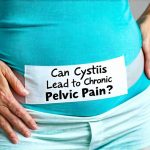Chronic pelvic pain (CPP) is a debilitating condition affecting millions worldwide, significantly impacting quality of life. It’s characterized by persistent or intermittent pain in the region below the umbilicus, often without an obvious identifiable cause despite thorough medical investigation. Understanding the complexities behind CPP requires moving beyond simply identifying physical structures and recognizing the critical role played by the nervous system – not just as a transmitter of pain signals, but as an active participant in the experience and perpetuation of chronic pain states.
Traditional approaches to understanding pelvic pain often focus on anatomical sources like endometriosis, irritable bowel syndrome (IBS), or musculoskeletal issues. While these conditions can certainly contribute to pelvic discomfort, they don’t fully explain why some individuals develop chronic pain while others do not. Increasingly, research highlights the intricate interplay between physical factors and neurological processes in shaping the perception and maintenance of chronic pain, making it clear that CPP is often a complex neurobiological phenomenon.
The Nervous System & Pain Perception
Pain isn’t simply a direct result of tissue damage; it’s a subjective experience constructed by the nervous system. Nociceptors, specialized sensory nerve endings, detect potentially harmful stimuli (like inflammation or pressure) and send signals to the spinal cord. From there, these signals are relayed to the brain where they are interpreted as pain. However, this process isn’t straightforward. The brain doesn’t passively receive information; it actively modulates pain perception based on a multitude of factors including past experiences, emotional state, and expectations.
This modulation explains why two individuals with seemingly identical physical injuries can experience vastly different levels of pain. It also means that the nervous system can become sensitized over time, leading to chronic pain even in the absence of ongoing tissue damage. This is where the complexities of CPP really begin to emerge.
Neuropathic Pain & Central Sensitization
Neuropathic pain arises from damage or dysfunction of the nerves themselves. While less common as a primary cause of CPP than nociceptive pain (pain from tissue damage), neuropathic components can significantly contribute to chronic pelvic pain syndromes. Nerve entrapment, inflammation directly affecting nerve tissues, or even surgical procedures can all lead to altered nerve function and persistent pain signals.
Understanding Central Sensitization
Central sensitization is a key process in the development of many chronic pain conditions, including CPP. It refers to an amplification of neural signaling within the central nervous system (spinal cord and brain). Repeated or prolonged activation of nociceptors causes neurons to become hyperexcitable – meaning they fire more easily and respond to even mild stimuli as if they were intensely painful. This can lead to allodynia (pain from normally non-painful stimuli) and hyperalgesia (increased sensitivity to pain), both hallmarks of chronic pain states.
The brain also undergoes changes during central sensitization. Areas involved in processing emotions, memory, and attention become intertwined with pain pathways, reinforcing the experience of pain and making it more difficult to manage. This explains why emotional distress often exacerbates CPP and vice versa – creating a vicious cycle. The longer central sensitization persists, the harder it becomes to reverse, highlighting the importance of early intervention.
The Role of Descending Pathways & Modulation
The nervous system isn’t just about sending pain signals up to the brain; there are also descending pathways that modulate pain perception and can either amplify or suppress it. These pathways originate in the brain and travel down the spinal cord, influencing how pain signals are processed. Factors like stress, sleep deprivation, and anxiety can inhibit these descending inhibitory controls, effectively turning up the volume on pain signals.
Conversely, activities like exercise, mindfulness, and positive social interactions can activate these pathways, providing natural pain relief. Understanding this bidirectional system is crucial for developing comprehensive treatment approaches that address not only the physical aspects of CPP but also the psychological and emotional factors involved.
Visceral Nociception & Pelvic Pain Specifics
Visceral nociceptors are specialized nerve endings found in the pelvic organs (bladder, bowel, uterus, ovaries) and respond to stimuli like stretching, inflammation, or chemical changes within these organs. These receptors differ from those found in skin or muscles, leading to a unique experience of pain that is often poorly localized, diffuse, and accompanied by other symptoms such as urinary frequency, bloating, or altered bowel habits.
The pelvic region has a particularly rich nerve supply, and there’s significant overlap between the nerves serving different organs. This means that pain originating in one area can be referred to another – for example, pain from the uterus might be felt in the lower back or rectum. The complexity of visceral nociception contributes significantly to the challenges in diagnosing and treating CPP, as it can be difficult to pinpoint the source of the pain accurately.
Ultimately, chronic pelvic pain is rarely a simple issue confined to one anatomical location or physiological process. It’s a complex interplay between physical factors, neurological processes, psychological state, and individual experiences. A holistic approach that considers all these aspects is essential for effective management and improving quality of life for those living with this challenging condition. Recognizing the nervous system’s central role in shaping the experience of pain provides a framework for understanding why CPP can persist even when underlying physical causes are addressed, and it opens up possibilities for innovative treatment strategies focused on restoring healthy neurological function.





















